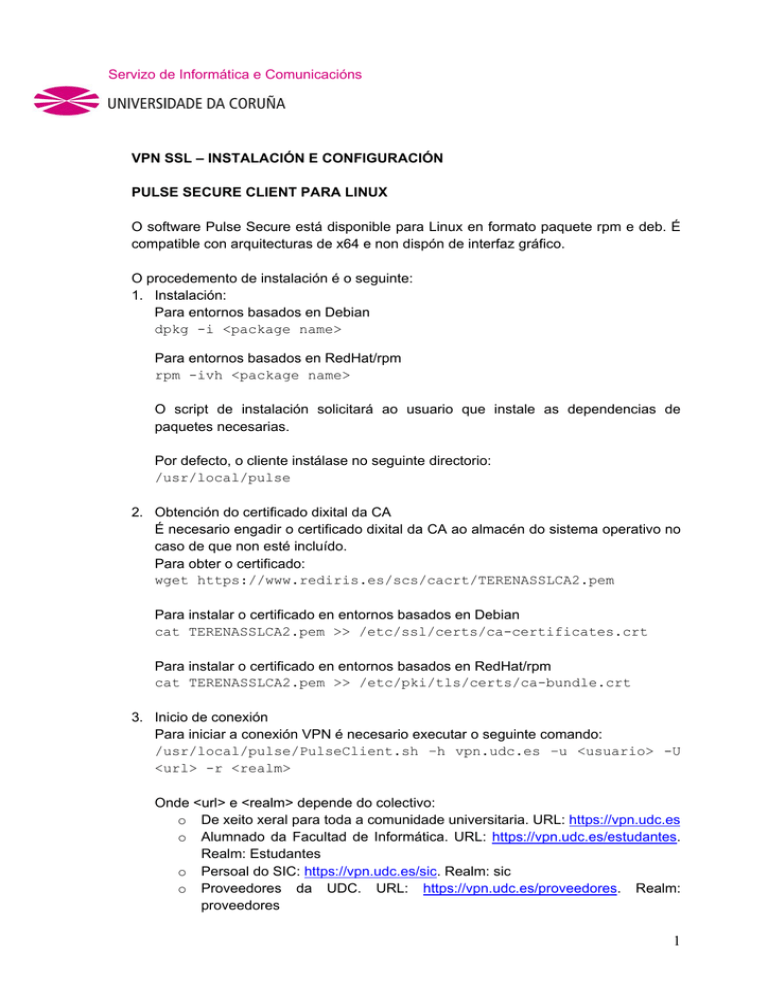

- #REDHAT PULSE SECURE CLIENT HOW TO#
- #REDHAT PULSE SECURE CLIENT INSTALL#
- #REDHAT PULSE SECURE CLIENT UPDATE#
- #REDHAT PULSE SECURE CLIENT REGISTRATION#
Go toĤ.4 Click "Connect" button on "Connections" of Pulse Secure.Ĥ.5 Enter ID for Username and Password on Pulse Secure Client )Ĥ.2 Input your "Login ID", and click the "Next" button.Ĥ.3 A matrix screen is displayed but do not logging-in on this browser.

URL for SSL-VPN of J-PARC connection ( Accessible from JLAN, JAEA-LAN and KEK-LAN.
#REDHAT PULSE SECURE CLIENT HOW TO#
How to login to SSL-VPN of J-PARC 4.1 Start browser, and access to the certification site. Presetting of Pulse Secure Client is completed.
#REDHAT PULSE SECURE CLIENT REGISTRATION#
(There is a case that some packages are necessary though just one package is required in example.)ģ.3 Setting of Pulse Secure Client 1 Start installed Pulse Secure Clientįile Location differs with different distribution, version and window manager of OS as below examples.Ģ Registration of Connection(at the time of first access)Ĭlick "+" button on “Pulse Secure” window.Įnter Name and Server URL as below.Then click "save" button. If the script failed, find the cause of failure and resolve with using yum(rpm) command or apt(dpkg) command. (Script name is changed depends on the downloaded packages.) It should be installed all the required packages.
#REDHAT PULSE SECURE CLIENT INSTALL#
Run the install script of the packages as dependency on Pulse Secure Client. Please refer /usr/local/pulse/README for instructions to launch the Pulse Client usr/local/pulse/PulseClient_x86_64.sh install_dependency_packages You can install the missing dependency packages by running the below script

Please execute below commands to install missing dependent packages Installation of packages that have dependencyįollow the displayed message and install packages that have dependency. Installation of the downloaded packagesĢ. Running with terminal software such as "Terminal" without using install tool of GUIġ.Account that has administrator rights ("su" and "sudo" can be used).Install the downloaded packages on the environment as below. It will be updated every 6months excluding a case of emergency.
#REDHAT PULSE SECURE CLIENT UPDATE#
Linux version has no auto update function, which differed with Windows and macOS version.ĭownload and update with manual on a regular basis. How to check using installed version of Pulse secure, go to "4.7 Method of check the Pulse Secure Client version". Setting of Pulse Secure Client 3.1 Download software (Pulse Secure Client)Ĭhoose suitable one for using OS and download. Your account will be locked if the password is not changed.ģ.


 0 kommentar(er)
0 kommentar(er)
